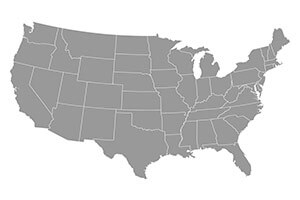
As the Covid-19 pandemic turned life in the United States topsy-turvy, winter turned to spring and reminded us that the world does not stop turning for the bees and their keepers. We continue to be an integral part of agriculture and are thus deemed an “essential” industry, exempt from some “shelter in place” requirements. Thus, commercial pollinators emerged from the almond groves and went on to perform vital services pollinating other crops and/or producing bees for hobbyists across the country.
While Apis mellifera as a species continues to have problems of its own, one of our reporters looked on the bright side: “Glad honey bees are immune to coronavirus!”
Northeast
The Pennsylvania retail market is strong. Demand continues for local honey, and some smaller producers are regretting selling in 5-gallon bucket quantities in summer and fall, as supplies will likely run out before the late spring flow begins.
The winter has been warm and bees are eating through their honey stores, meaning March required heavy feeding for many. Winter losses are between 30 and 40 percent. Spring came early, with maples blooming March 10 in southeastern PA.
New York’s winter was also warm, and spring came a bit early. This year’s sales outlook may depend on the effects of the Covid-19 pandemic. One reporter suggests the use of novelty hang tags as a sales tool.
New Hampshire’s winter losses were a bit lower, perhaps 25 percent. One reporter reiterates that mites are to blame as usual, though Russian bees appear to have the best survival. Optimum Apiguard treatments may need to be done earlier than before to knock varroa populations back.
Maine beekeepers report good sales of honey, both wholesale and retail. Spring started wet so soil moisture is high.
Mideast
Our reporter in southeastern Kentucky reports high winter losses (up to 60 percent) for the area, necessitating lots of April and May splits. Things look a little better farther west, at perhaps 20 percent. Soil moisture looked good in March, predicting a good early bloom from autumn olive, linden and sourwood.
Virginia’s losses were likely in the 30s, and spring buildup looked good through March. Demand for packages was down slightly, and honey sales were average.
Eastern Tennessee reports large winter losses, perhaps as high as 75 percent. Many colonies went into winter light on stores, warm temperatures early on caused them to consume much of what they had, and dramatic temperature fluctuations were also hard on the bees.
Southeast
Florida losses appear to be around 30 percent or so, and spring conditions are about average. Retail demand for honey is good.
Georgia is reporting lower losses, possibly approaching 10 percent. Soil moisture is good, and prospects promising for orange and gallberry.
Alabama losses may be more like 40 percent, and heavy feeding was needed for the survivors due to a mild winter. But spring buildup has been good, and package bees are about two weeks ahead of schedule. Honey sales are good, both retail and wholesale. Facebook marketing shows good results.
Southwest
Retail sales are good in Louisiana, wholesale sales average. Winter losses range from 10-20 percent, and spring colony buildup has been good. Ample moisture in the ground suggests a good flow for wildflowers, tulip poplar and clover.
New Mexico’s spring buildup also looks good, and beekeepers are increasing colony numbers. Wholesale and retail sales are good at this time.
Much of Texas is still recovering from moderate drought conditions last summer, and many beekeepers needed to feed earlier than usual. But abundant spring rain bodes well for the coming season. The retail market is looking good — “the best ever” according to an East Texas reporter, as the Covid-19 pandemic is driving consumers to stock up on honey.
East Central
Winter losses were high in Wisconsin, but soil moisture is looking good for the coming season. Honey is moving well at retail and wholesale.
Illinois honey production was down in 2019, so feeding has been necessary for many. But an early spring and “almost perfect moisture” in the northeast brought an abundance of wildflowers and a good maple flow. Getting a handle on mites proved once again to be the key for overwintering success. Package orders were up this year, and demand for queens is steady.
Michigan also saw the early appearance of spring. Heavy feeding was necessary, but colony buildup was strong. Varietal honey is selling well (up to $10/pound), and comb honey’s popularity is on the rise. Beeswax food wraps are the new trend among crafters, leading to increased demand for beeswax.
Indiana losses look about average, 30 percent or so. Spring buildup has been good, and supplies of bees have been adequate as suppliers have responded to high prices by increasing their production of nucs and packages.
West Central
A Nebraska reporter tells us that “bee theft is at epidemic levels.” Winter losses also approached 50 percent, and heavy


